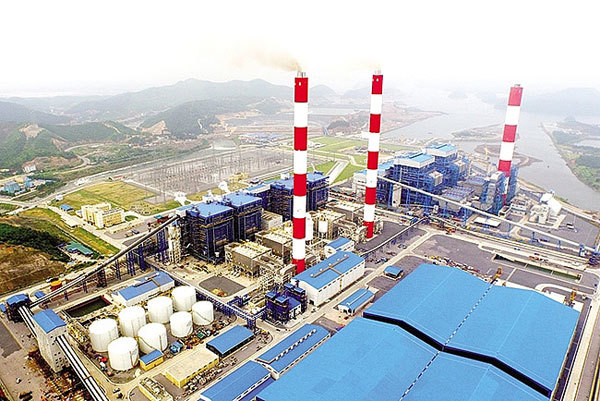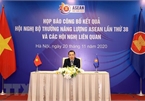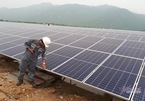Michelle Manook, chief executive of the World Coal Association, and Dr. Nuki Agya Utama, executive director of the ASEAN Centre for Energy, talked about how clean coal technologies bring benefits to ASEAN member states.
 |
| Coal power plant. |
The ASEAN Centre for Energy (ACE) and the World Coal Association (WCA) have signed a 3-year MoU to strengthen joint commitments to clean coal. What does the signing mean to the region?
Manook: Coal is a critical enabler to provide affordable, abundant, reliable energy. However, there is a lack of understanding about how that builds communities and how that supports emerging economies, particularly in the ASEAN region.
This collaboration with the ACE is a very good first step for us to really showcase all of the advancements that the ASEAN region is doing in CCT, and also to educate a global audience about the importance of balancing both economic development and environmental issues.
The three years will be a good start with a focus on making sure that there’s good credible data that informs good policy decisions, both with the government, but particularly around investment.
The ASEAN region is showing great leadership and it is at the forefront of those high efficiency, low emission technologies. This is a very important step to bridging the gap towards zero emissions.
Utama: Last month, the 38th ASEAN Ministers on Energy Meeting (AMEM) has endorsed the ASEAN Plan of Action for Energy Cooperation (APAEC) Phase II: 2021-2025, of which Coal and Clean Coal Technology (CCT) is one of the programme areas. Under the APAEC Phase II, the CCT programme area will continue the promotion to optimise the role of CCT in facilitating the transition towards a sustainable and lower emission development.
The signing of the MoU between ACE and WCA is timely as it will further support the implementation of APAEC Phase II: 2021-2025. We expect that the cooperation between ACE and WCA will pave the way for ASEAN in achieving its key strategies and also facilitating energy transition and enhancing energy resilience.
What do you think about the demand for clean coal technologies (CCT) in ASEAN? How about CCT advancement among ASEAN member countries? What future trend of CCT deployment do you foresee in the region?
Manook: According to the International Energy Agency and the International Panel on Climate Change, there is no single or credible scenario that is 100 per cent renewable. So the deployment of clean coal technologies is quite critical to provide very reliable baseload that supports the reliability and integrity of the system, and also the affordability of our energy system.
Actually, many ASEAN countries still need a much deeper understanding of those clean technologies, and much more educated understanding is needed.
A lot of developed nations have decided to move to clean coal technologies. Ultimately, governments and financial institutions, whether they are state-owned or other financial institutions, they need to be on the same page and educated in the same way about those clean coal technologies, particularly in the ASEAN region.
When people understand the limitations of excluding clean coal fire, particularly to providing affordable and reliable energy systems and how that will impact economic growth and other industries, the case for clean coal technologies is very compelling.
Utama: According to the 6th ASEAN Energy Outlook, coal is projected to remain central in the ASEAN power mix, which is projected to reach around 36 per cent by 2040. This reliance on coal reflects the region’s considerable reserves and coal’s low cost, both of which make it economically attractive to provide electricity in ASEAN countries. In addition, Although renewable energy will continue to grow in parallel with the growing electricity demand, some of it is classified as an intermittent energy source and this would make coal still play an important role as a baseload to support renewable energy in the future.
On the other hand, despite its affordability, using coal as an energy source can bring environmental issues due to growing per capita emissions. In 2017, per capita emissions in ASEAN were about 2.62 tonnes of CO2 equivalent – well below those of major Asian economies such as China, Japan, and the Republic of Korea, but still rising across much of the region. This should be the concern that needs to be addressed for ASEAN member states since they will still be likely to depend on coal as a baseload for an energy source.
Therefore, promoting low carbon transition, ASEAN requires some clean coal technology deployment to reduce emissions. Clean coal technology (CCT) has proven to enhance coal efficiency, which means that electricity can be produced with less coal, and thus also reduce greenhouse gas (GHG) emissions.
While there are several efforts that ASEAN member states could have implemented regarding CCT, it is important to note that about half of the coal resources in ASEAN – especially in Indonesia – are considered low-rank coal.
The power that is produced from low-rank coal would emit more CO2 per unit of electricity than higher-quality coal. Fortunately, there are several ways to enhance the efficiency of coal-fired power plants such as coal upgrading, high-efficiency, low-emissions (HELE) coal power, and co-firing systems. Based on the 6th ASEAN Energy Outlook (AEO6) report, some coal upgrading demonstrations have been conducted in Indonesia through which the upgraded brown coal could increase a coal-fired power plant’s thermal efficiency by up to 5 per cent while reducing CO2 emissions by as much as 15 per cent.
Furthermore, ASEAN has implemented the so-called HELE coal technology such as supercritical (SC) and ultra-supercritical (USC) coal-fired power plants which offer efficiency gains of 42 and 45 per cent compared with the subcritical technology that is only 38 per cent. Malaysia has led the way by operating the 1,000MW Manjung 4 plant which is ASEAN’s first USC coal-fired power plant. Additionally, Indonesia plans to harness the potential of Carbon Capture Utilisation and Storage (CCUS) and a pilot project will be implemented in Gundih, making it the first CCUS project in ASEAN.
In addition, other efforts such as a cofiring system – mixing coal with biomass for combustion – are expected to be implemented in the future. In ASEAN, co-firing biomass in coal power plants could be considered a short- to medium-term strategy to reduce coal dependency and also to help achieve the APAEC target of 23 per cent renewable energy by 2025. Indeed, ASEAN member states are projected to still rely on coal for their baseload, but several improvement efforts have been going among AMS, showing that it is slowly moving toward cleaner technology.
Do you have any global stories from countries which benefit from CCT in economic growth and sustainable development?
Manook: The Sasan supercritical power plant project in India has the potential to generate power for 17.5 million people across 17 states in that region, and that creates 41,000 jobs throughout its construction and operational life. It also enables 22 million people to have access not just to energy but to energy that powers a safe water supply.
To adapt to globalisation, it is very important that government policy is quite clear that it includes coal and CCT, and it incentivises for development. So the clarity really must come from government policy initially, but investment policies should support that policy, and they should not be making decisions that sit outside of where governments want to be.
Utama: One example of a story is that Japan since 2012 has proposed a post-Kyoto Protocol emission-reduction credit mechanism – the “bilateral offset crediting mechanism”. This will provide support and incentives to the Japanese private sector to export emissions reduction and low carbon technologies to developing counties such as India, Indonesia, and Vietnam. Through this mechanism, Japan expects to benefit from emissions reduction credits while the countries receiving the technologies will get high-end, efficient technology on competitive terms. Such a win-win outcome is likely to improve global environmental outcomes for coal power generation in a cost-effective way.
In Vietnam, coal is one of the important resources, especially for baseload power generation, but also remains a special concern over environmental pollution. How can the country secure the financial support and promote policies to accelerate the deployment of CCT?
Manook: It seems that investors and their sustainability committees are really not fully knowledgeable of the total contribution of coal, the importance of coal, and the limitations of renewables. Many decisions are actually being made by traditional investors that are ill-informed.
I believe that the Vietnamese government understands that dismissing coal, and more importantly, dismissing CCT, is actually quite dangerous to the overall long-term sustainability of a robust and affordable energy system, which powers their economic growth.
With the country’s draft national power development plan, it has that consideration for USC technologies. This is all important leadership to other global markets in how to create a very clear policy setting for the development of CCT.
I'm really looking forward to engaging with the Vietnamese government now, particularly under this MoU with the ACE because I can see that they have committed to continuously improving to bridge the gap between the financial support and the deployment of clean coal technologies.
Utama: We noted that some ASEAN countries still need coal for sustaining a high level of growth and the environmental pollution from coal is one of the issues that should be addressed.
Countries could ensure the seriousness to implement the technologies to maximise efficiency and minimise emissions from new coal power plants through the promotion of CCT, such as by enacting more stringent environmental and efficiency standards for coal-fired power plants or mandating the new coal power plants to only utilise advanced technology such as USC or above.
With the policy support coupled with the social and environmental responsibility, this would give incentives for transitioning away from low-efficient technologies through a higher deployment of CCT. VIR
Bich Thuy

ASEAN looks towards sustainable energy future
Vietnamese Deputy Minister of Industry and Trade Dang Hoang An chaired a press conference in Hanoi on November 20 to inform about major contents of the joint statement of the 38th ASEAN Ministers on Energy Meeting (AMEM).

Rooftop solar power saw tremendous growth in 2020
Over 100,000 rooftop solar power works with total capacity of 9,300 MW were connected to the national grid by December 31, 2020.